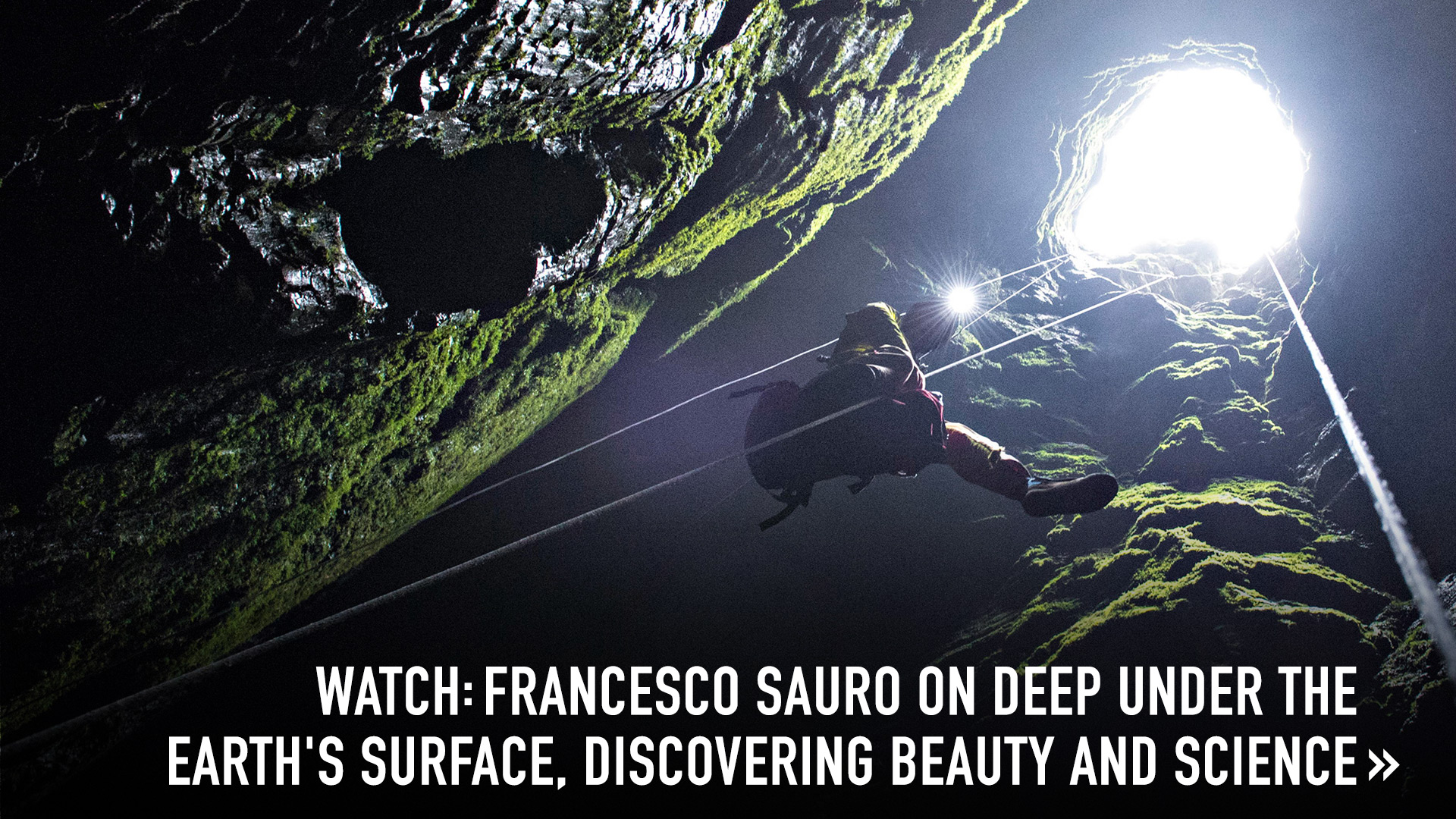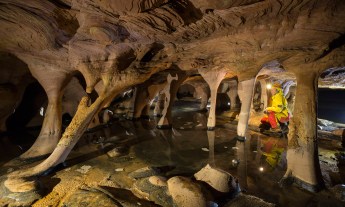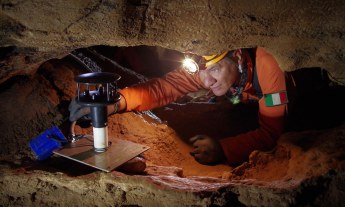A team of geologists has been exploring the caves beneath the table mountains of Venezuela, where new lifeforms may have been quietly developing for millions of years. Journalist Lars Abromeit describes the expedition into the unknown.
We are in Canaracuni, a village on the northern edge of the Amazon basin. A concert of cicadas, frogs and night swallows drifts over the mud huts of the Ye’kuana people. A few hunters sit around the fire, working on traps and arrows. Some 2,300 meters (7,546 feet) above us rises a mysterious mountain — the Ye’kuana call it “Sarisariñama,” one of the largest of the more than 100 table mountains in the area bordered by Venezuela, Brazil and Guyana. These mountains are incomprehensibly old, the last remains of a gigantic plateau of sand that covered this region more than 1.7 billion years ago. Geologist Francesco Sauro (TED Talk: Deep under the earth’s surface, discovering beauty and science), who has been exploring caves since his childhood and is a professor at the University of Bologna in Italy, is co-leading an exploration into the underworld of this particular table mountain, or tepui. What can the caves below tell us about primitive times? And what creatures live in it? These are the questions that Sauro, together with his geology colleague Marco Mecchia, ten other speleologists from the La Venta and Theraphosa cave research associations, and I have come to here to answer.
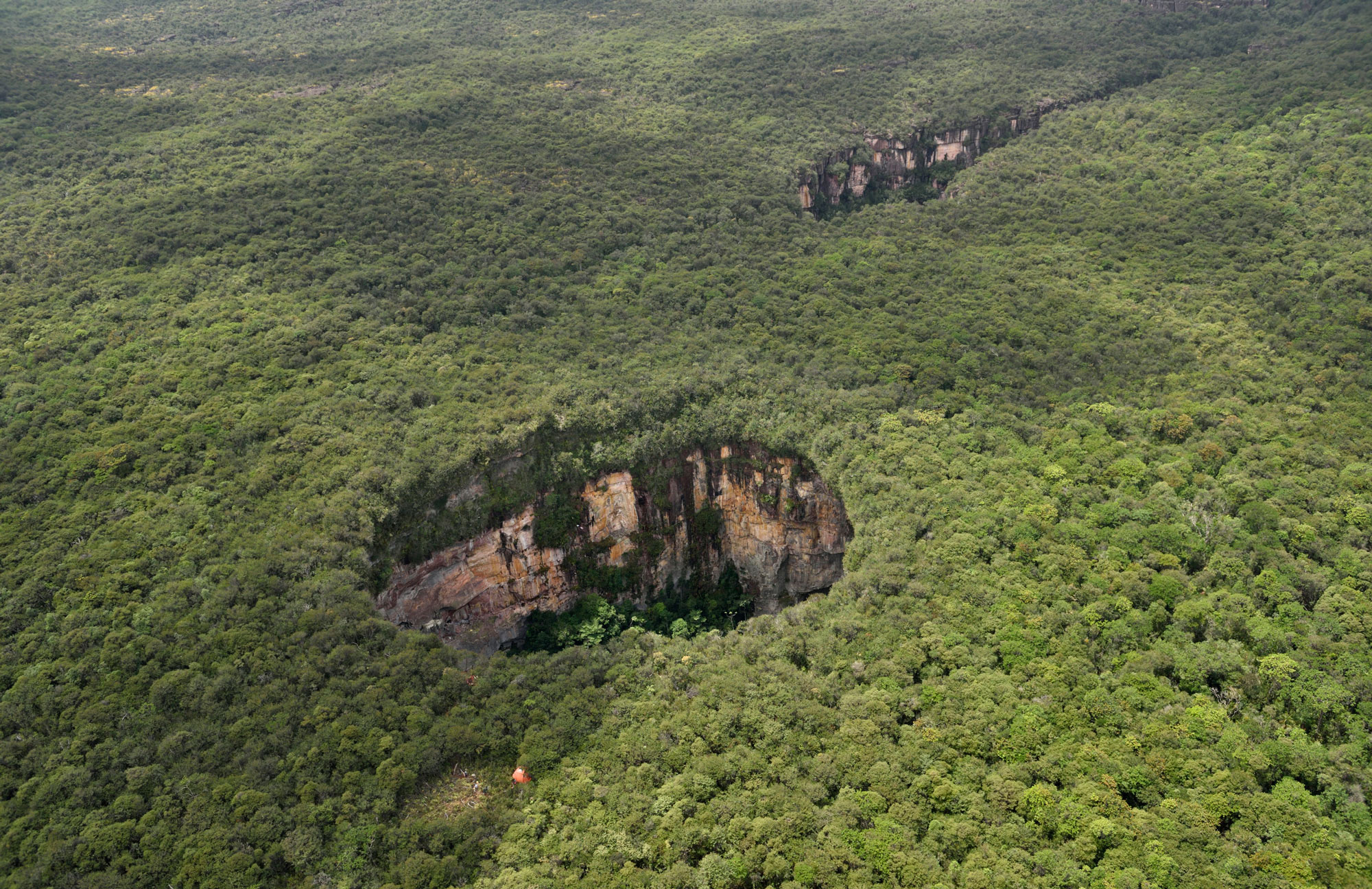
We descend on Sarisariñama via helicopter. As we step onto the ground, a wonderful fragrance surrounds us, from orchids, tree lilies and trees densely covered with mosses and other plants. It’s like we’ve landed on a strange jungle planet.
Tectonic forces raised the sandstone plateau of the tepuis over hundreds of millions of years. Then the plateau was slowly eroded and transformed by rain and storms. Here, evolution has created new species, including carnivorous plants lurking between the mists and dozens of unique bromeliads.
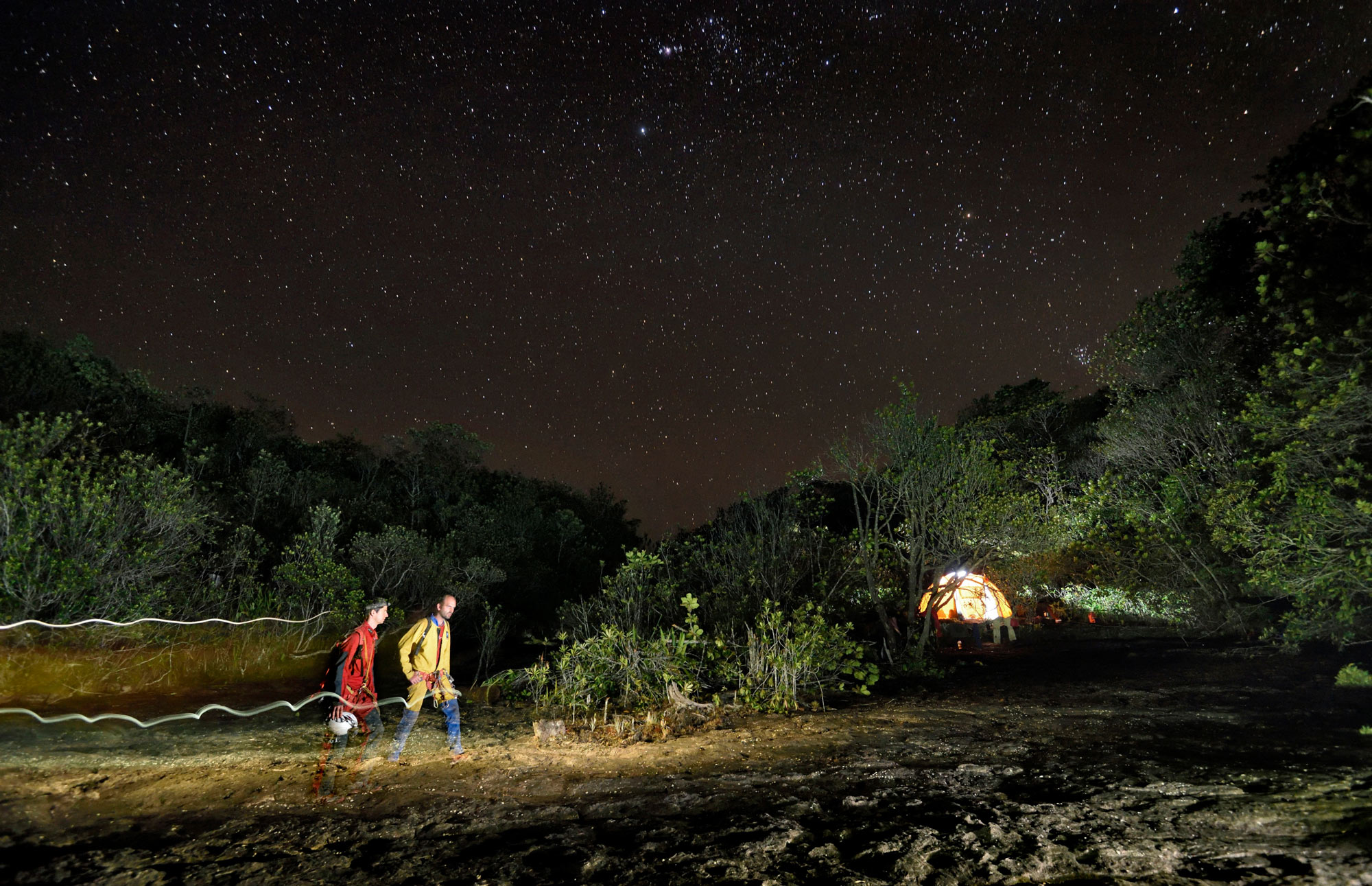
Through this web of alien beings, we climb and sometimes crawl. Suddenly, in front of us is one of the black holes that Sauro has been looking for: a breathing, circular mouth, wide as a stadium and about 250 meters (820 feet) deep. This sinkhole is the Sima Martel. Steep red walls disappear into the depths, and we can glimpse the tops of trees at the bottom. The Sima Martel is one of the largest of the peculiar round sinkholes that distinguish the Sarisariñama. Five simas have been discovered here, and how they were created is still puzzling.
The next morning, we travel down ropes into the void of Sima Martel. We descend into a new world: past vertical moss gardens, past rocky cliffs, with ferns and creepers protruding from the crevices, past slippery stone plates. Hummingbirds hover in midair. As we walk along the the bottom, we find another black hole. Water bubbles out. It’s an underground river — we have reached Cueva de la Cascada, the entrance to the cave system described by a pioneering research team of Polish and Venezuelan speleologists who ventured here 40 years ago.
Marco Mecchia enters, and we follow him, using headlights and wading through the cold water. Every few meters, he scratches at the rock to take a sample. “Hard to catch …” he murmurs. “It’s exactly as we’ve calculated.” He is searching for an explanation into how these underworlds arose beneath the tepui. The rocks here are sandy and rough, not as smooth as the ones on the surface. They’ve been weathered by a geological process called phantomization: Rainwater slowly seeps through the stone pores and removes silicon dioxide. Aggressive minerals such as iron hydroxide or pyrophyllite accelerate the process, and the microbes that live in these lightless depths may also play a role. In this way, the extremely hard quartz rock is roughened, allowing it to be eaten away by water.
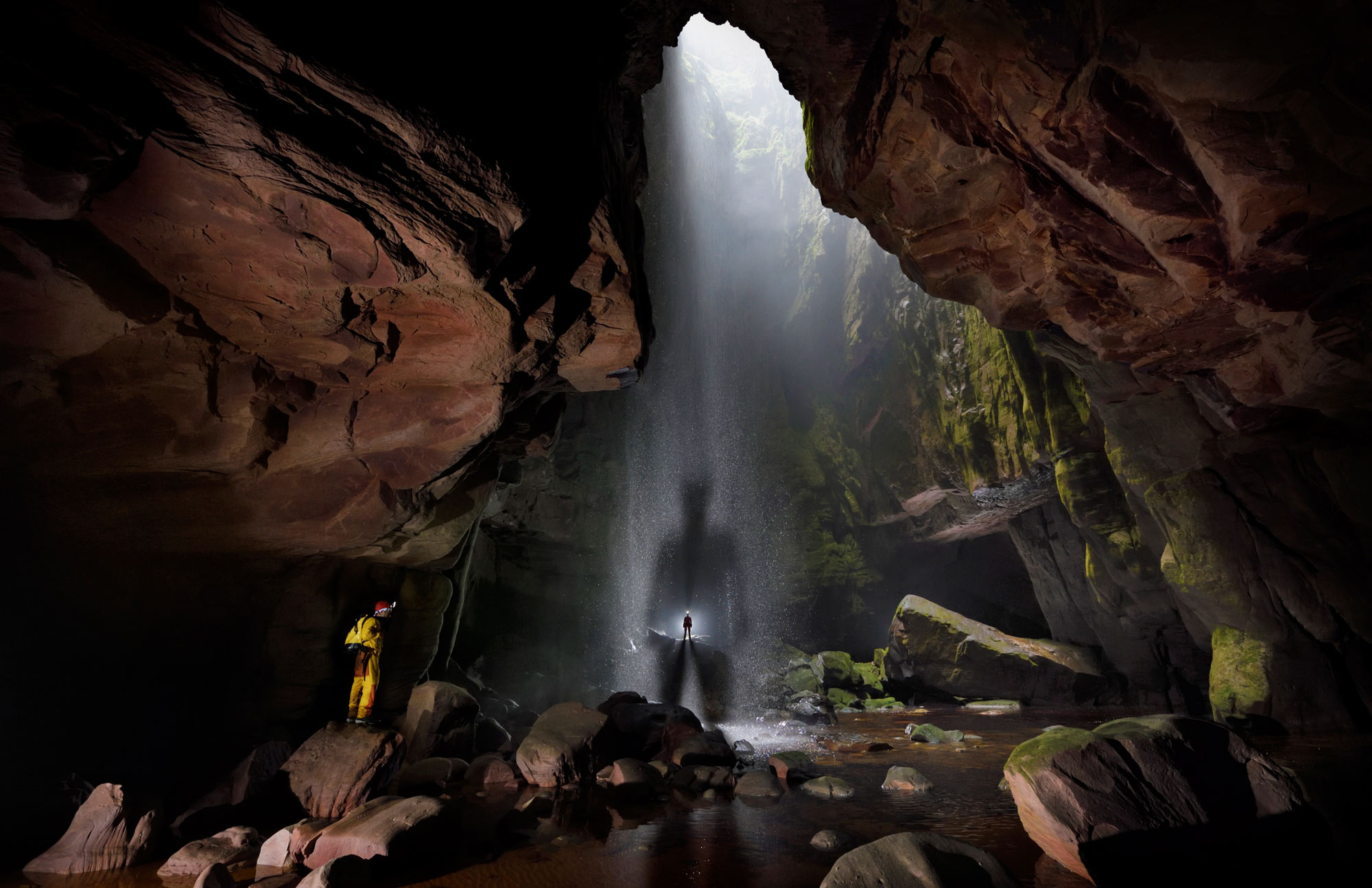
Compared to caves in soft limestone mountains, the tepuis’ caverns grew very, very slowly. In order to grow a meter, they needed 100,000, perhaps a million years, according to Sauros and Mecchia’s calculations. The complex, branched tunnel systems in which we stand could reach back 100 million years into the primitive times, Mecchia estimates: “[These are] probably the oldest caves in the world.”
These dripping stones are actually clusters of microbes. Rather than being inanimate objects, they are living stones.
What kind of creatures could have evolved in these eons of lightless solitude? To find out, we meet up with Sauro a few days later on the southern part of the plateau. He leads us on a foray into the large Sima de la Lluvia. At its bottom scorpions and spiders cower, and we enter an opening in the sima wall. We walk into a tunnel, which continues for miles and miles. It widens, taking us through splendid halls. Some of the walls contain crystals that shimmer white and green. It’s a sparkling quartz palace.
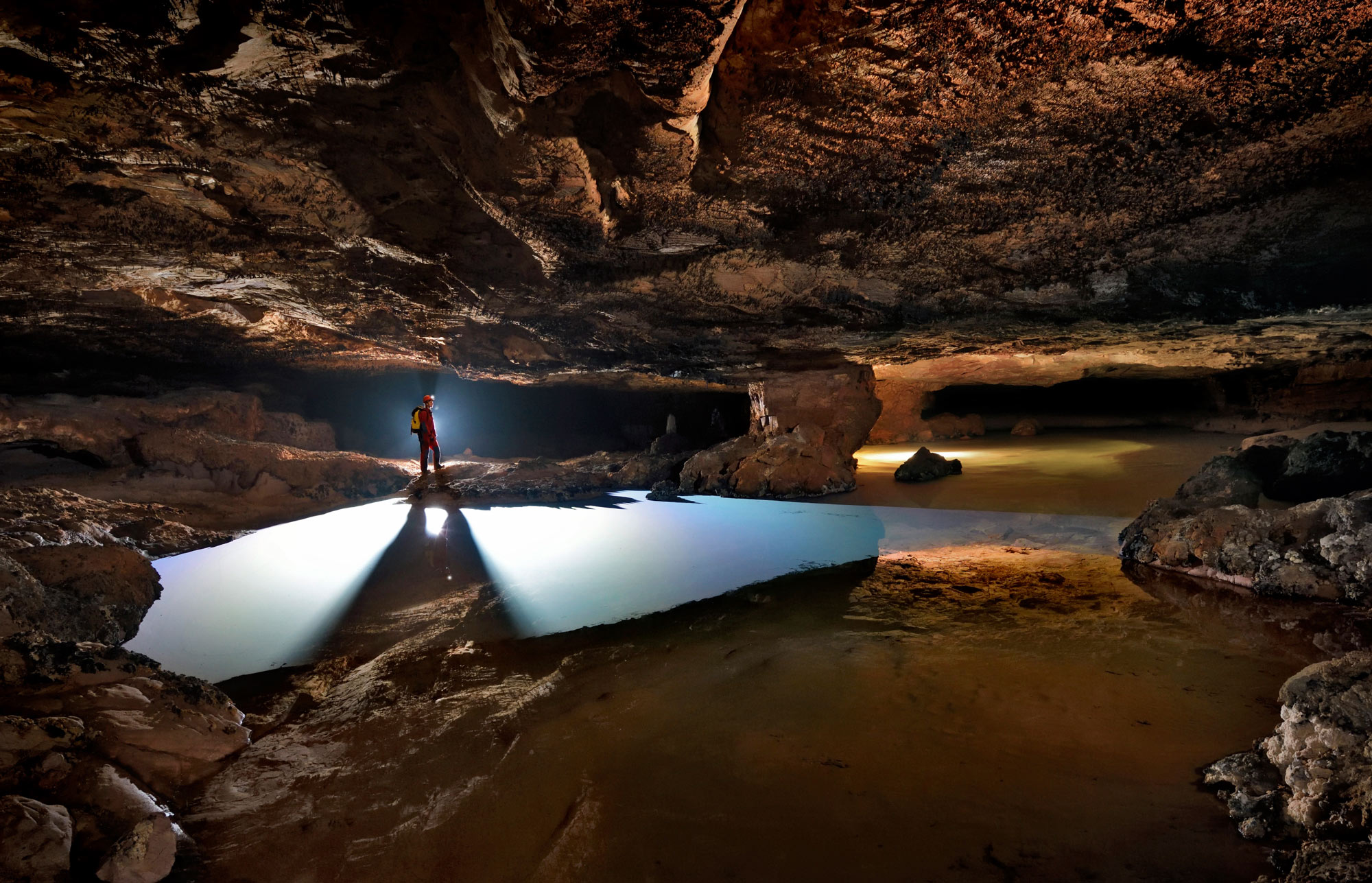
In narrower passages, through which a warm and humid stream of air passes, we find on the ceilings, on the walls and on the ground peculiar, drip-like stone sculptures, which the pioneering explorers had reported seeing 40 years earlier. They look surreal. Some remind me of coral reefs that stretch in the darkness. Others resemble fungi. And others are no longer than our fingers and so soft that we could easily crush them in our hands.
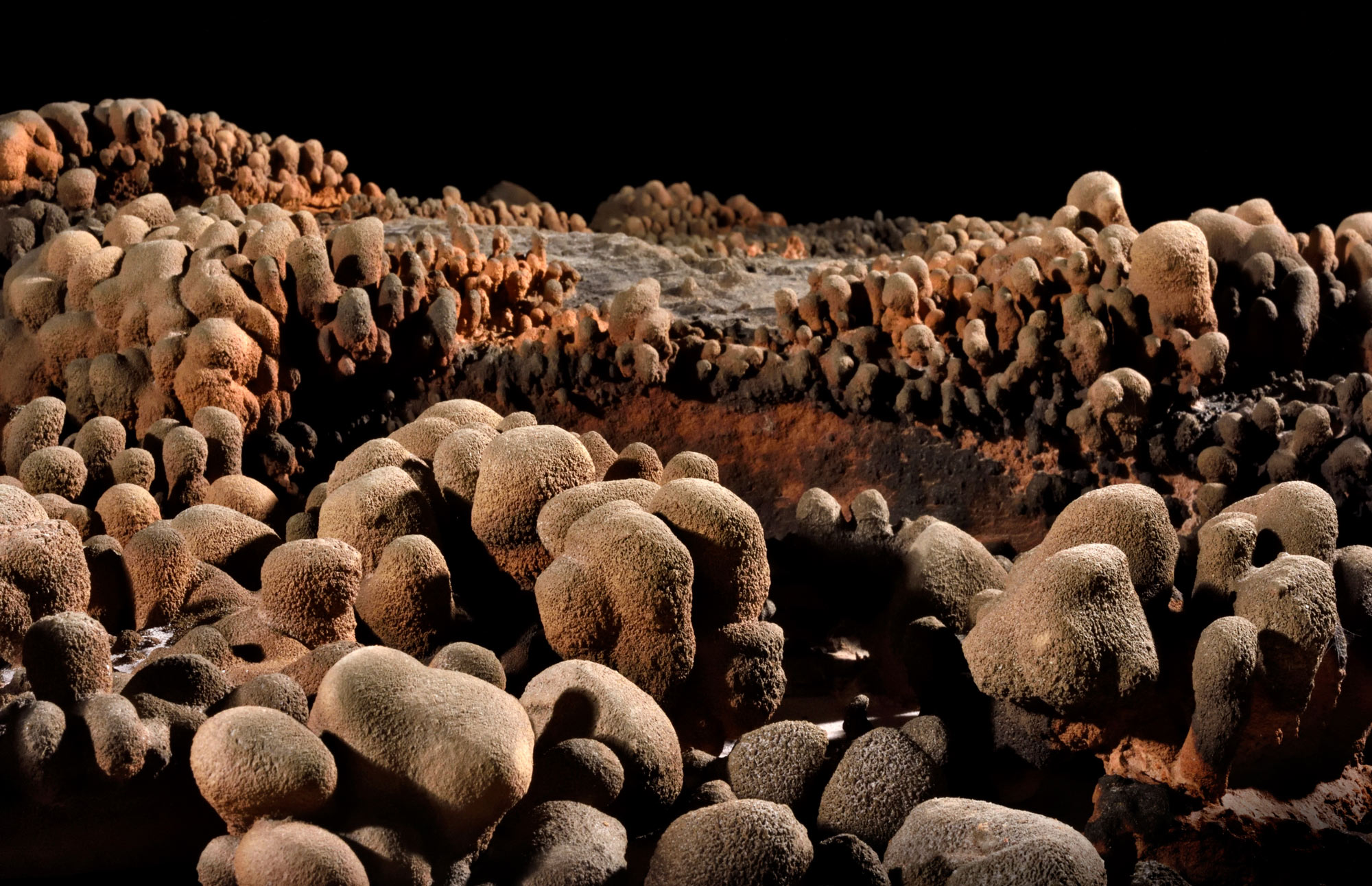
“Stromatoliths!” exclaims Sauro. These dripping stones are actually clusters of microbes that use minerals as scaffolding in a combination of rock and pulsating cells. Rather than being inanimate objects, they are living stones. Stromatoliths dominated the world in the remote epoch in which the tepuis developed. They largely died out as the first multi-cell organisms developed in the primordial oceans. Only in hidden, extreme habitats like salt lakes, hot springs or the deep sea could these colonies survive until the present day. In those places, however, the microbial structures mostly consist of limestone. Their relatives in the belly of the Table Mountain, on the other hand, are built out of silicon dioxide — pure quartz sand crystals.
Here, in the depths beneath the tepui, we are looking at life before this decisive leap occurred.
For scientists, these rare stromatolites are an invaluable discovery. “They open a window at the very early time when calcium carbonates have not yet spread,” says Sauro. It was only 550 million years ago that these minerals accumulated in the ocean. Shortly afterward, the first creatures began collecting calcium in their cells and forming skeletons from them. This set the stage for a sensational evolutionary leap: these new frameworks of cartilage, bones and shells made it possible for organisms to move through the oceans faster and more forcefully, and later to colonize the land. The diversity of life exploded. In this Cambrian explosion, the foundations for almost all of today’s creatures were laid, including, eventually, us humans.
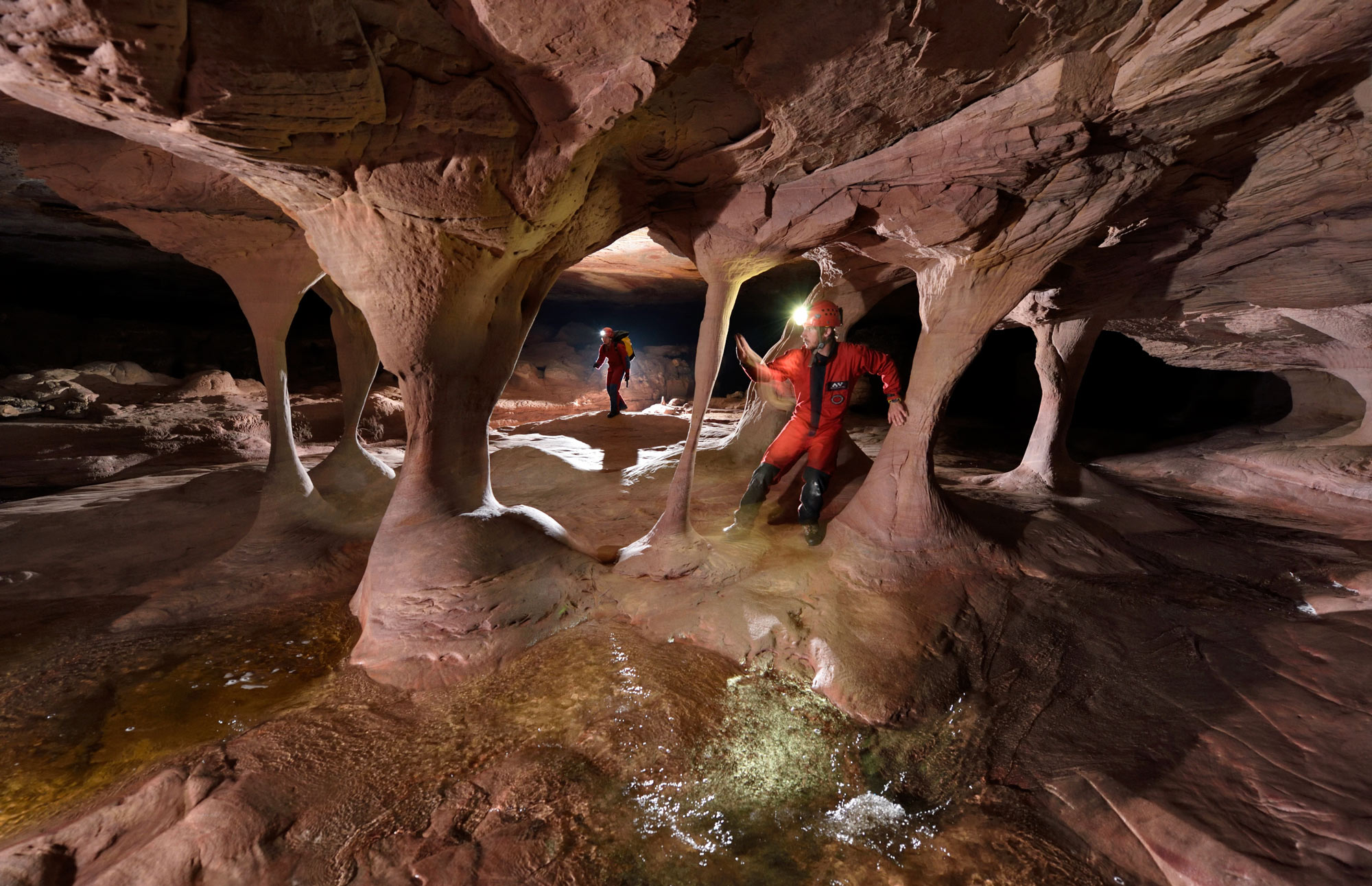
Here, in the depths beneath the tepui, we are looking at life before this decisive leap occurred. Minerals and cells have melded, but the silicon compounds have not yet made the jump to larger, more daring constructions. Do we see here in the underworld an alternative branch of development that has continued on independently? Could this be the path to a world unlike the one we know, a world without bones, cartilage and calcareous shells? Could life have continued developing further on this path, to evolve into beings with complex skeletal structures, possibly even Homo sapiens, but built out of sand?
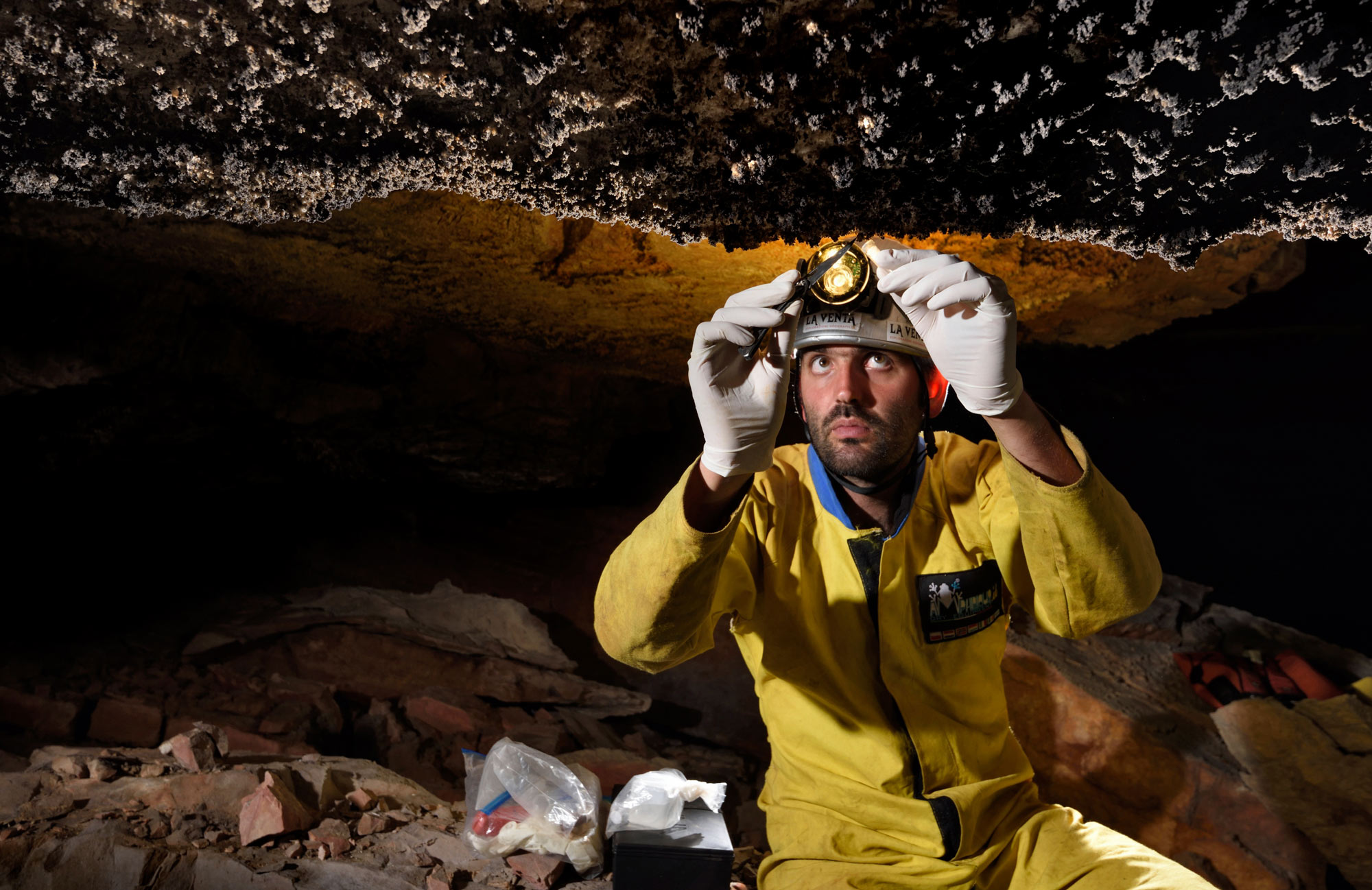
“It would be conceivable,” says Sauro. To date, however, there is still too little information about the strange creatures he and his colleagues call “biospelothems.” The researchers speculate that the microbes use their silicon framework to capture nutrients from the air and transfer them to the inner, living part of the structure through capillaries. Do there exist different forms of these organisms? Are they perhaps linked into an ecosystem in a superorganism that is much more complex than we can see? Sauro is taking samples to be analyzed for DNA. And he is already planning his next expedition to begin to find the answers to his questions. He wants to go further into the Amazon basin to more remote tepuis so he can compare their cave formations to the ones we’ve seen in an effort to start to understand them.
From the helicopter the next morning, we look down and spot dozens of other little simas, all potential gates to a hidden empire. They rush past our eyes before they’re lost in the rainforest. So many caves that have been hidden for millions of years — just waiting for a future group of humans descends into them to explore.
Excerpted with permission from “Expedition Tepui” by Lars Abromeit, Geo magazine, November 2016.

